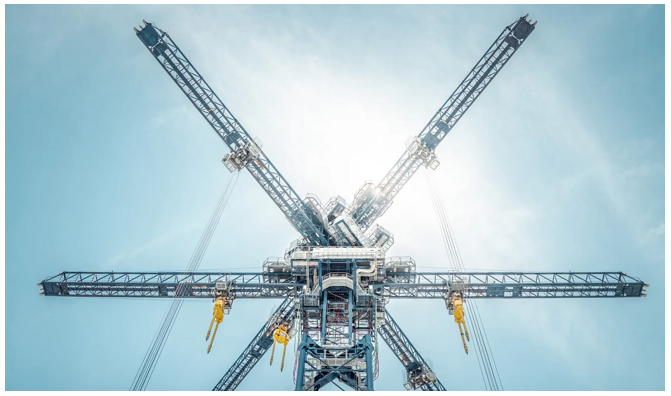- Courses
- GS Full Course 1 Year
- GS Full Course 2 Year
- GS Full Course 3 Year
- GS Full Course Till Selection
- Online Program
- GS Recorded Course
- NCERT (Recorded 500+ Hours)
- Polity Recorded Course
- Geography Recorded Course
- Economy Recorded Course
- AMAC Recorded Course
- Modern India, Post Independence & World History
- Environment Recoded Course
- Governance Recoded Course
- Science & Tech. Recoded Course
- International Relations and Internal Security Recorded Course
- Disaster Management Module Course
- Ethics Recoded Course
- Essay Recoded Course
- Current Affairs Recoded Course
- CSAT
- 5 LAYERED ARJUNA Mentorship
- Public Administration Optional
- ABOUT US
- OUR TOPPERS
- TEST SERIES
- FREE STUDY MATERIAL
- VIDEOS
- CONTACT US
Using Gravity to Solve Powers Problem
Using Gravity to Solve Powers Problem
07-10-2023

Latest Context
- As countries increase renewable energy capacity, there is a growing need to develop long-term energy storage systems.
- Gravity batteries are emerging as the best option in solving biggest problem of renewable energy- intermittency.
What is a Gravity Battery?
- A gravity battery is a type of electricity storage device that stores gravitational energy, the energy stored in an object resulting from a change in height due to gravity, also called potential energy.
- A gravity battery works by using excess energy (usually from sustainable sources) to raise a mass to generate gravitational potential energy.
- The most common gravity battery is used in pumped-storage hydroelectricity (PSH), where water is pumped to higher elevations to store energy and released through water turbines to generate electricity.
- Another form of a gravity battery lowers a mass, such as a block of concrete, to generate electricity.
- As of 2019, the total world capacity for PSH is 168 GW (gigawatts).
- The US has 23 GW capacity from PSH, which is about 2% of the US energy supply system and 95% of utility-scale energy storage in the US.
- Gravity based pumped-storage electricity is currently the largest form of grid energy storage in the world.
Development of Long-duration Energy Storage Systems:
- These systems could be installed alongside green power generation to balance out the variability in renewable power, given that green generation is not always in sync with the electricity demand cycle.
- Energy Vault, a Swiss company (developer of utility-scale storage technology) is offering a proprietary gravity-based storage, to plug this gap.
- Energy Vault’s proprietary ‘EVx’ platform utilises gravity and a mechanical elevator system to stack 35-tonne blocks made of a composite material at the top of a towering structure.
- When the power demand is low, the elevator uses surplus/excess electricity from the grid or electricity generated by renewable plants, to lift or raise these blocks and line them up at the top of the structure.
- When power demand increases, the blocks are powered down one by one, releasing kinetic energy that is used to rotate a motor and generate electricity, which can then be pumped back to the grid.
Advantages of the ‘EVx’ Platform:
- This type of energy storage can be an innovative solution for countries (including India).
- It can solve the biggest impediments to wider deployment of renewable generation - the ability for power companies to store energy for use by consumers when the sun is not shining or the wind is not blowing.
- It can also facilitate the shift to a circular economy while ensuring clean energy transition.
Gravity Batteries vs Lithium-ion Batteries:
- Gravity batteries are not the only way renewable energy can be stored, lithium-ion batteries dominate the market and some experts favour green hydrogen.
- But gravity is free, clean and easily accessible, without the complications of producing hydrogen or the environmental and human rights concerns linked to some lithium mining.
- While lithium-ion batteries lose capacity after they have been charged and recharged over years, the gravity systems are made of robust components which will last much longer.
India’s Renewable Energy Push and Challenges:
- The country is the world’s third largest producer of renewable energy and nearly 40% of installed electricity capacity comes from non-fossil fuel sources.
- This green effort has resulted in a 24% reduction in emission intensity of GDP between 2005 and 2016, but it has also thrown up challenges of a grid being increasingly powered by renewables.
- Additionaly, grid managers are already grappling with the challenge of operationally sustaining a massive monthly addition of an average 1,000 megawatt (MW) from renewables to the electricity grid.
- Policymakers believe New Delhi needs to work quickly on developing viable energy storage options.
- The government considering two alternatives: hydrogen and hybrid generation models blended with off-stream pumped storage.
Developments in India in the Field of Gravity Battery Storage Systems:
- India’s push for deployment of large-scale renewable power makes storage a prerequisite to support this expansion.
- Energy Vault is in the process of establishing a base in Bengaluru. It is in talks with NTPC Ltd (India’s biggest generation utility), Mumbai-based Tata Power and green energy company ReNew Power for collaborations collaborations.
- NTPC had signed an MoU last year for a long-term strategic partnership for the deployment of Energy Vault’s EVx energy storage technology and software solutions.

![img-PSYCHOLOGICAL WARFARE [PSYWAR]](https://i.filecdn.in/755esias/PSYCHOLOGICALWARFAREPSYWAR-1747206772505.jpg)

